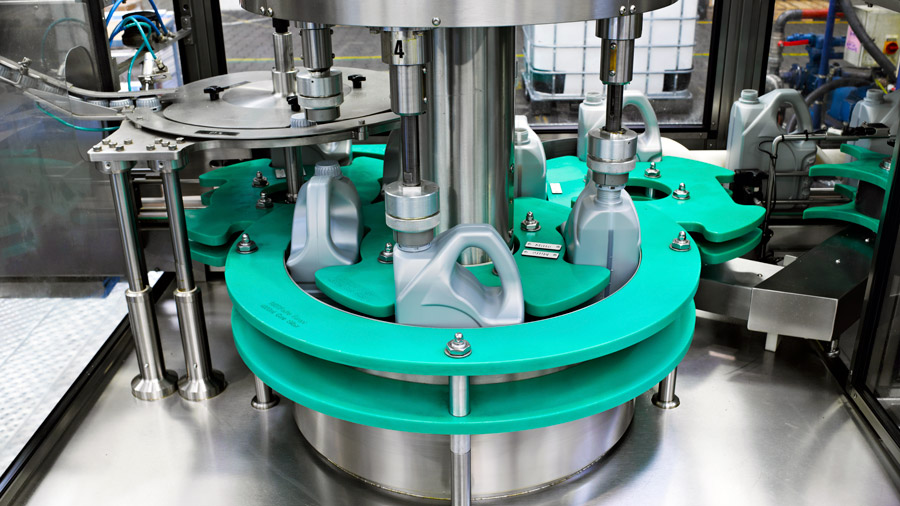
Independent lubricant manufacturers well positioned to capture post-Covid value
Despite a highly competitive market and relatively flat demand growth, 2019 was a good year for lubricant manufacturers in the United States. During a virtual “Town Hall” meeting organised by the Independent Lubricant Manufacturers Association (ILMA) on 3 July 2020, Greg Julian, president of Advanced Lubrication Specialties, based in Bensalem, Pennsylvania, U.S.A., described 2019 as “one of the best years” in the last 20. A year ago, it was impossible to foresee the demand destruction Covid-19 would inflict on the U.S. lubricant industry.
The immediate health impacts and loss of life caused by Covid-19 are sobering. The economic scarring triggered by stay-at-home orders, lock downs and travel restrictions will have long lasting impacts in the form of persistent unemployment, cost cutting, lost sales, supply chain disruptions and business closures.
Speaking at the ILMA meeting, Suzan M. Jagger, vice president at IHS Markit, Oil Markets, Midstream & Downstream (OMD) Consulting, signalled that the lubricant industry may be reaching a period of peak earnings. Jagger leads the global lubricant consulting practice for IHS Markit from the company’s New York office. The effects of Covid-19, coupled with the entire energy transition, zero-carbon ambitions, and the rise of electric and autonomous vehicles, could mean earnings reached their ceiling in 2019, she says.
Providing a perspective on “How we must change to capture new value in a post-Covid world,” Jagger offered a demand outlook for the automotive and industrial sectors. IHS Markit projects a 25% decline in U.S. transport lubricant demand in 2020 relative to 2019. Forecasts include automotive engine oils, driveline lubricants, aviation, and railroad products, but exclude international marine volumes.
Even with a possible recovery spike in 2021, transport lubricant demand falls well short of 2019 volumes in 2022 (-9%) and will remain below 2019 levels moving forward. Jagger attributes lower future earnings to the growth in electric vehicle penetration, extended oil drain intervals and increasing market share of synthetic lubricants.
It is a similar story for non-transport demand. IHS Markit’s outlook sees average demand drop 17% compared to 2019. In contrast to the automotive sector, industrial lubricants will experience a slower, more gradual recovery to 2024. Again, earnings will never again touch 2019 levels, says Jagger.
During the ILMA meeting, a panel of industry representatives provided individual company perspectives on the post-Covid recovery. Julian, who is an ILMA board member, indicated orders have rebounded to 85% in recent weeks. This, after sales plummeted to as low as 40% in April and May.
Advanced Lubrication Specialties experienced a dramatic fall in automotive demand. Julian attributes the decline to a cessation in second car usage or the “soccer parent syndrome.” Primary vehicles were less affected. Stay at home orders will continue to create a difficult trading environment over the next six months, he says. By the third quarter of 2021, Julian is hopeful of a return to “pretty normal levels” for automotive lubricants.
Kaustav Sinha, sales manager, North America, for Chevron Oronite, also noted a plunge in passenger car lubricant demand alongside a smaller drop in commercial automotive lubricant sales. In other product lines, demand for lubricants in the agriculture and power gen applications has remained “pretty resilient,” he says.
Chevron Oronite is “cautiously optimistic” as market indicators begin to turn in the right direction. The company currently anticipates reaching about 80% of additive volumes in 2020, compared to 2019. By 2023, Chevron Oronite anticipates a return to 2019 levels, he says. Sinha, who has more than 10 years technical and commercial experience, also highlighted the risks associated with a long additive product development cycle and heavy investment in the recent IMO 2020, ILSAC GF-6 and GM dexos development milestones. According to him, there are opportunities to streamline future specification development processes, remove unnecessary complexities and reduce technology development cycles especially in the automotive engine oil space.
A variety of factors will influence the pace of recovery. Vaccine development is perhaps the most visible element in arresting public fear of socialisation, declines in recreational travel and discretionary purchases. An employment recovery is also vital in improving consumer confidence.
How consumption patterns and business models will change moving forward is as yet unknown. How many people will return to offices? What will the impact of corporate restructuring and consolidation be? Will we see a rise in automation and a touchless economy? The U.S. is still in the midst of the first wave of Covid-19. What would a second virus wave mean for lubricant manufacturers? Companies will need to change and adapt to prosper. Other policy and government factors will have a notable impact. Jagger suggests nationalism and a lack of cooperative efforts will impact the pace of revival. If we can mend some of our trade relationships in a more cooperative manner, it does have a positive economic impact, she says.
 Companies are grappling with how to structure supply chains moving forward, and a balancing act between demand volatility, production, and stocking levels. Both Sinha and Jagger emphasised the importance of a flexible, diversified and integrated supply chain as companies weigh up third-party outsourcing, that provides a variable cost structure, against insourcing and the creation of a shorter more reliable raw material supply chain. A trend to consolidate Manufacturing around base oil hubs provides a potential response to higher volatility.
Companies are grappling with how to structure supply chains moving forward, and a balancing act between demand volatility, production, and stocking levels. Both Sinha and Jagger emphasised the importance of a flexible, diversified and integrated supply chain as companies weigh up third-party outsourcing, that provides a variable cost structure, against insourcing and the creation of a shorter more reliable raw material supply chain. A trend to consolidate Manufacturing around base oil hubs provides a potential response to higher volatility.
What worked yesterday, is not going to work in the next couple of years, says Jagger. Companies that can fully utilise their supply chain assets are well placed to capture new value opportunities. Active monitoring of supply chains to mitigate demand volatility is essential. Companies also need to consider expanding digital-based and transparent customer interfaces, and acceleration of internet sales in a more virtual market. Supply chain gaps may emerge through rationalisation, requiring the support of logistics companies to bridge those gaps, says Jagger.
A silver lining of the turmoil in the U.S. lubricant industry is an opportunity for ILMA members to grab market share during the recovery. Strong players that have speed to market, flexibility, and can manage to a lower cost base have the opportunity to capture volume in a declining market, says Jagger. ILMA members have demonstrated over many years they can be nimbler and more flexible than multinational oil companies, with an ability to react quickly as demand increases or slows down. However, ongoing success will depend on their size, and the structure of their supply chain, says Julian.








